- As Arctic sea ice disappears, the projected increase in shipping threatens the region’s outstanding marine mammal aggregations and migrations
- Acoustic monitoring of marine mammal vocalizations in key marine corridors can inform practices that minimize risks and impacts on wildlife, but recorders can now collect such a wealth of data that processing is now a major challenge
- Scientists endeavor to (a) train software programs to monitor recordings and recognize species’ calls autonomously, and (b) determine the appropriate number and locations of underwater recorders, to prepare for the possibility of a real-time warning system for passing ships
‘Faster than expected’ is how Arctic residents describe the pace of climatic change at the top of the world. From big melts to ice-free summers – wildlife and humans alike are facing a new normal that is changing how the two groups behave and interact.
The Arctic is home to some of the world’s most spectacular animal migrations – and aggregations – onshore and off. On land, the migrations of vast caribou herds are well documented. At sea, whales gather after completing journeys from half a world away, tens of thousands of boisterous walrus congregate at single sites, and ice-seals estimates can total into the hundreds of thousands.
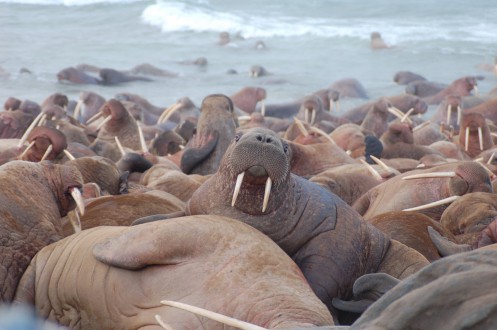
Within the vast Arctic landscape, scientists are now learning about relatively small focal sites that have greater than expected impacts on the system as a whole. One such place is at the Bering Strait, a relatively narrow choke point off the coast of northwest Alaska, where tens of thousands of marine mammals pass on their annual migrations. Another is around Banks Island at the entrance to the Northwest Passage. Marine corridors are now the focus of study not just for their wildlife values, but because of the projected increases in industrial activities, such as shipping, inside these confined spaces.
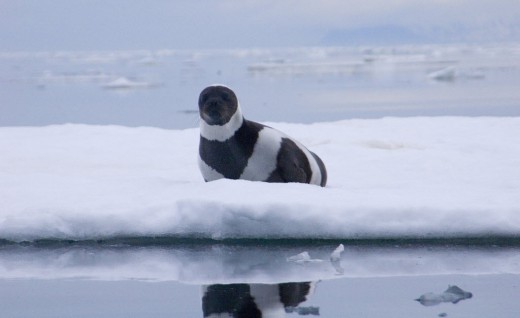
“Some of these passages that a few years ago saw a handful of ships per season are now seeing dozens to hundreds of freight and tanker trips, with significant increases projected in the future” explains Dr. Martin Robards, Arctic-Beringia Program Director at the Wildlife Conservation Society (WCS). To the east, the next few years are likely to see traffic transiting the Northwest Passage in the Canadian Arctic escalate from practically zero, particularly with cruise tourism. This concerns Robards and his team, since risks to marine mammals from increased shipping may include direct mortality through ship strikes, noise disturbance, and contamination from intended and unintended discharges.
In an effort to provide information that can minimize these risks, the WCS team has initiated a project that is bringing the voices of the deep to light. Working closely with local communities, the team is deploying acoustic recording devices to capture use of these sensitive areas by the fantastic aggregations of great whales, walrus, and other pinnipeds. Knowing the times of year when marine mammals are present will help to target mitigation measures like requiring ships to reduce speed or avoid certain areas.
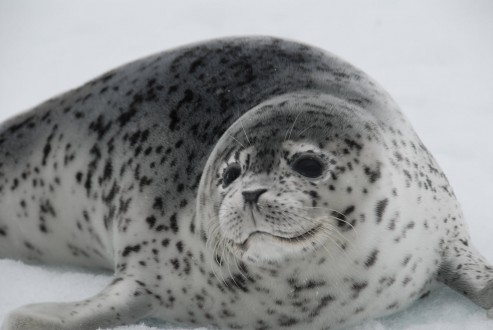
“By monitoring the underwater acoustic environment, we can get a clearer ‘picture’ of what the whales and seals are doing, predict how human activities such as seismic exploration and shipping may cause problems, and develop ways to minimize or avoid impacts”, describes Dr. Ricardo Antunes, WCS Marine Conservation Fellow.
While acoustics have been used to monitor marine mammal populations in exploration areas for the past three decades or so, this is one of the first projects focused where activities are just ramping up. “If you try to record a human voice, rare is the place you can do so without the background noise of a car or airplane.
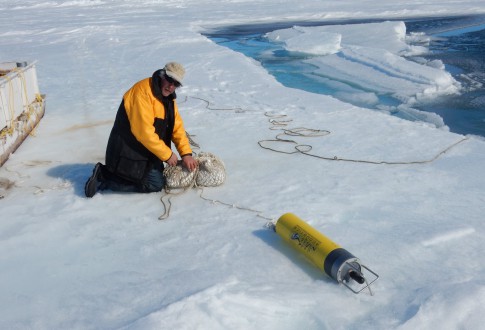
The same is true with ship noise in the ocean. At Banks Island (Canada), we have one of the very few places in the ocean where we can record marine mammals without background ship noise” notes Dr. Stephen Insley, Research Scientist at WCS. “This is about to change. So getting a baseline now is important.”
To capture marine mammal calls, the WCS team uses automatic sound recorders that operate and log the marine acoustic environment for nearly a year. The recorders are positioned just above the ocean floor so that they don’t get caught in the ice that covers the study area in winter.
The devices consist of a water- and pressure-proof housing containing a hydrophone (underwater microphone), more than a handful of batteries, and low-power electronics. Data are saved on multiple memory cards and can be compressed if need be.
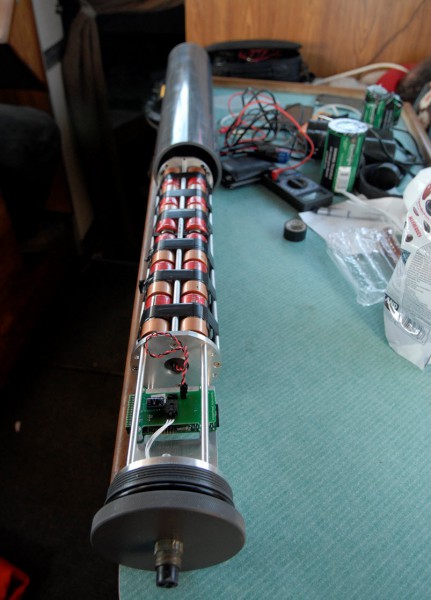
To allow the systems to last for several months, the devices are “duty-cycled” to record, and then sleep, for set intervals, but still many terabytes of information are recorded.
“In this remote environment, it is difficult to go out much of the year to conduct observations from a ship, or even a plane or helicopter,” notes Antunes, adding that acoustic monitoring allows the team to collect data continuously during all seasons.
But bad weather can also impede acoustic monitoring, especially because many marine mammals follow the highly productive sea ice edge as it either retreats and breaks up (in summer) or freezes up in winter. Ice movements make navigation, and thus, retrieval and deployment of the sensors, difficult. Says Antunes, “During my last trip, I had to wait four weeks for a good weather window that allowed me to go out to sea and service our recorders. There’s isn’t much we can do about this, other than just wait for better weather.”
Data overload
Once the team recovers the recording devices, their next major challenge is to manage the large volume of data collected. Computer programs that can automatically detect calls of some species are very helpful, but other species, such as bearded seals, produce calls that are challenging to identify automatically. At this time, the team is still heavily reliant on human analysts. With hundreds of thousands of hours of data, this can be a very slow process. Too slow to keep up with the pace of change, perhaps.
“We need to train the software programs to automatically recognize species and then highlight where we need to go in and do the listening to better understand presence with respect to ship traffic,” says Antunes. “There is a lot that needs to be learned – like which portion of the population are we sampling if not all individuals are calling?” For example, grey whales are known to travel silently when orcas are in the area.
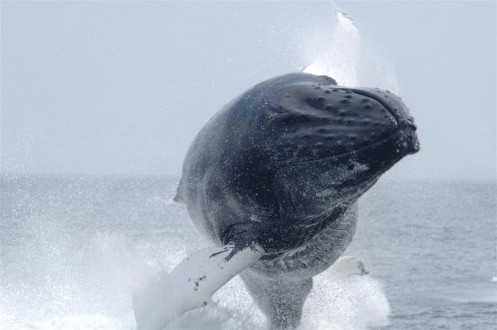
So far, despite some early project challenges (like a polar bear chewing on and sinking a locational buoy on Insley’s first deployment), the team is happy with what they’re learning. Although the researchers are in the early stages of analyzing the movement data, the sensors have already recorded humpback, killer, minke and bowhead whales, as well as walrus and bearded seals, with some species detected up to 10 miles away. They have also recorded passing ships.
Ultimately, the team hopes that their experience might lead to a permanent and real-time marine mammal detection system. “Currently we deploy our instruments for months at a time and do not get to look at the data until we recover it,” notes Antunes, “A real-time system could warn ships transiting the area about whale presence, so that mitigation measures (e.g. reduced speed) could be implemented on the fly.”
Real-time acoustic monitoring techniques exist and have been applied in other, more temperate, locations, but these buoys won’t work in the Arctic winter where seas routinely freeze. If hydrophones could be connected to underwater cables, including the network of new fiber optic cables linking across the Arctic, it would in theory be possible to provide real-time feedback to ship operators, who are required by law to avoid marine mammals but often lack the information to do so. Eventually, the acoustics data could even be linked in to new advances in automated ship tracking systems.
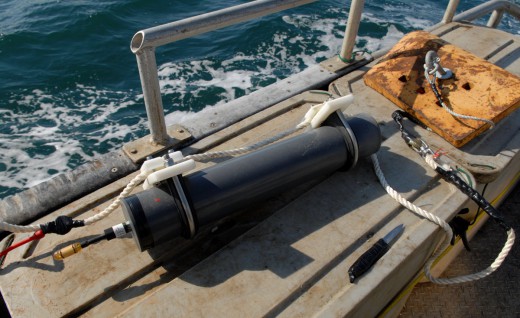
To produce sufficient data on marine mammal locations, Robards explains, “We need to know the minimum size array of recorders required, where to put them, and what we’re sampling. The current study will provide this information so that when a real-time system is possible, we’ll be able to plug in and provide instantaneous feedback to operators.”
And it would be just in time to greet the faster than expected arrival of large ships and their entry into the ice-free Arctic.